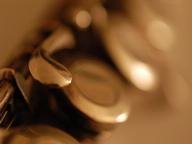Quiz Answer Key and Fun Facts
1. Who composed the piece "Density 21.5" for unaccompanied flute?
2. One of the most recognizable and beautiful flute solos of all time opens which Debussy composition?
3. Which of these nicknames belongs to an original flute composition?
4. Which Romantic era composer wrote an original flute sonata?
5. Which of these is not considered a Paris Conservatory piece?
6. Who composed a flute concerto in the 20th century?
7. Which of these was not originally composed for the flute?
8. Which of these chamber works for wind instruments includes a flute part? (The other three are for various combinations of oboes, clarinets, horns and/or bassoons, but no flutes.)
9. Which of these popular songs (as recorded by the original artists) features a flute solo?
10. In what musical setting would you be least likely to hear an alto flute?
Source: Author
celicadriver
This quiz was reviewed by FunTrivia editor
ralzzz before going online.
Any errors found in FunTrivia content are routinely corrected through our feedback system.

